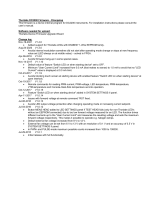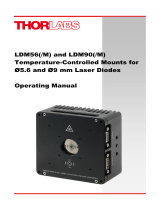Table of Contents
Chapter 1 Warning Symbol Definitions .............................................................................................. 2
Chapter 2 Safety .................................................................................................................................... 3
2.1. Safety Information ........................................................................................................... 3
2.2. General Warnings ............................................................................................................ 3
Chapter 3 Introduction .......................................................................................................................... 4
Chapter 4 Quick Connect Guide .......................................................................................................... 5
4.1. Ground Connections ....................................................................................................... 6
Chapter 5 Specifications ...................................................................................................................... 7
Chapter 6 Outline Drawings ................................................................................................................. 8
Chapter 7 Connectors ..........................................................................................................................12
7.1. Power Connector (Main Board – J7) ............................................................................ 12
7.2. Command Input Connector (Main Board – J3) ........................................................... 12
7.3. Diagnostic Output Connector (Personality Board – J12) .......................................... 13
7.3.1. Position Output .................................................................................................................... 13
7.3.2. Position Error Output ........................................................................................................... 13
7.3.3. AGC Monitor........................................................................................................................ 13
7.3.4. Velocity Output .................................................................................................................... 13
7.3.5. Slew Rate Output ................................................................................................................ 13
7.3.6. Current Monitor ................................................................................................................... 13
7.4. Servo Enable Connector (Main Board – J8) ................................................................ 14
7.5. Galvanometer Cables, Connections, and Jumpers ................................................... 14
7.5.1. Galvanometer Coil Connector (Main Board - J6) ................................................................ 14
7.5.2. Galvanometer Position Signal Connector (Main Board - J1) .............................................. 15
7.5.3. Slew Rate Limit Jumper (Main Board - J4) ......................................................................... 15
7.5.4. Direction Jumper (Main Board - J9) .................................................................................... 15
Chapter 8 Power Requirements .........................................................................................................16
Chapter 9 Heat Sink Requirements ....................................................................................................17
Chapter 10 Protection Circuits .............................................................................................................18
10.1. Servo Faults ................................................................................................................... 18
10.1.1. Power Failure Condition ...................................................................................................... 18
10.1.2. Under Voltage Condition ..................................................................................................... 18
10.1.3. Over Position Condition ...................................................................................................... 18
10.1.4. AGC Fail / Open Loop Condition ........................................................................................ 18
10.1.5. Servo Ready Signal ............................................................................................................ 18
10.2. Fuse ................................................................................................................................ 19
Chapter 11 Regulatory ...........................................................................................................................20
Chapter 12 Thorlabs Worldwide Contacts ..........................................................................................21

























